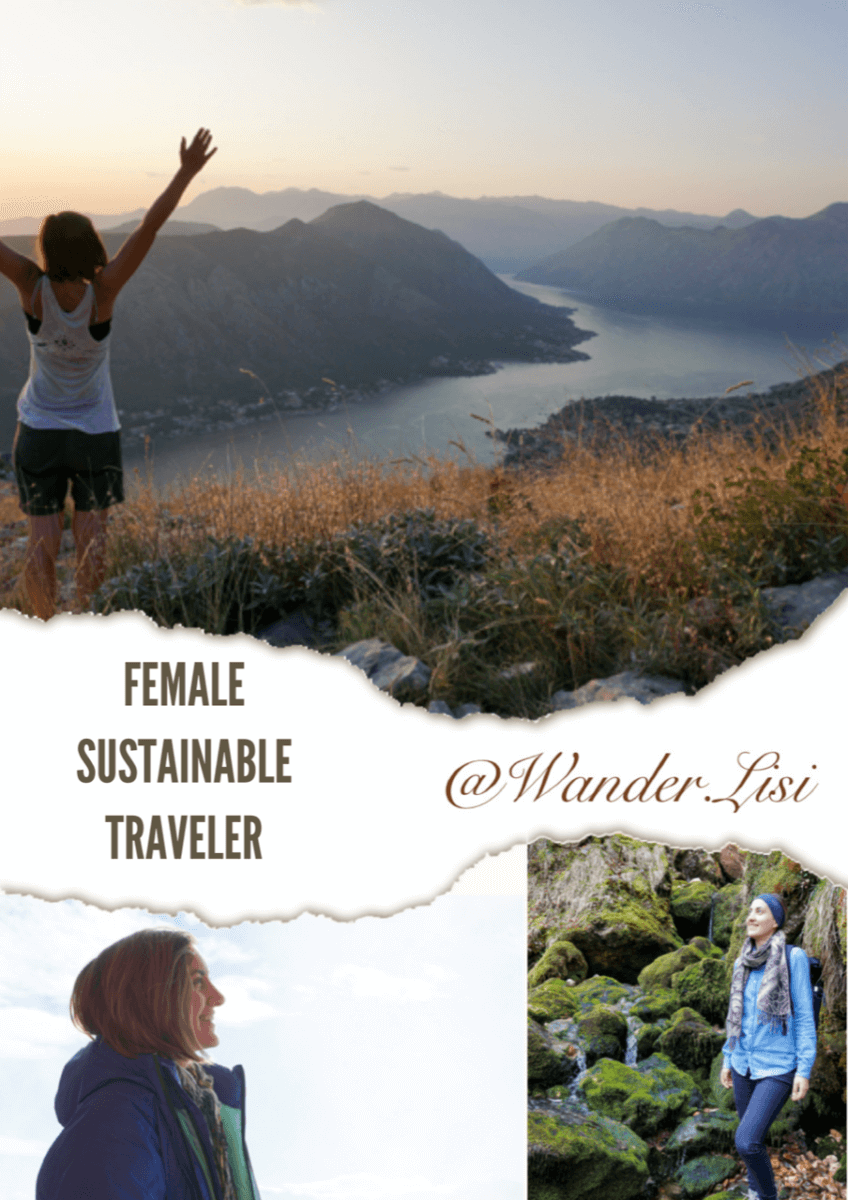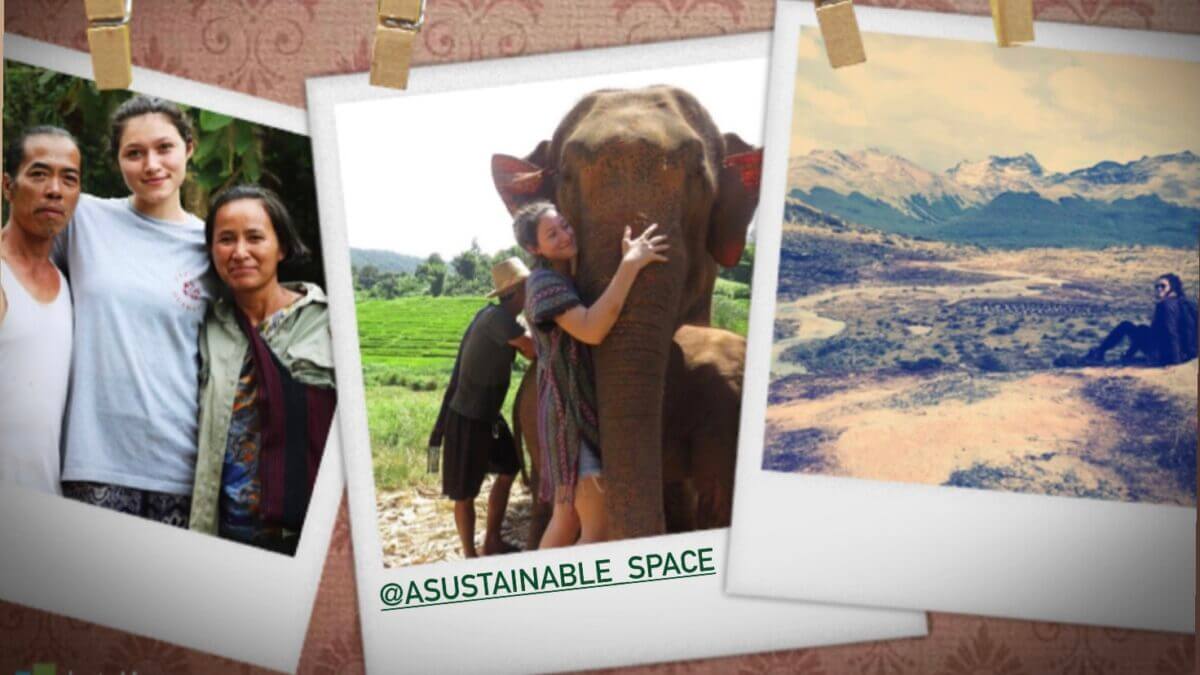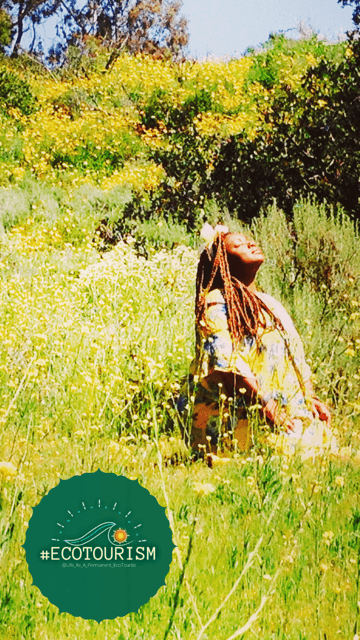“We can’t just consume our way to a more sustainable world”, a quote by @ecowarriors that resonates, right? Truthfully, most people stare blankly into oblivion when it comes to taking action toward sustainability. But the world can no longer justify turning a blind eye to the impacts of climate change on human life. Sustainability needs to be more than a trend. It should become a lifestyle if we are to have a fighting chance for the generations to come. Even as a ‘woke’ individual, it can be overwhelming knowing which realistic sustainable efforts can be implemented into daily routines. Let alone my travel methodologies. But there are those that care profoundly about this topic, live a sustainable-based life, and educate others accordingly. These are nine accounts that enlighten me on the daily about sustainable travel as a movement.
I get it. No one likes to be preached to, and trust me when I tell you, I don’t have the patience to try. You probably just pressed ‘checkout’ on Amazon.com while eating your third snack of the morning. You’re wearing those matching bra and panties or pajama set you caught on clearance, and want to hear nothing about overconsumption, right? The world can burn for all you care as long as YOU are comfortable. But this is the attitude that got us where we are… So let’s agree to change, shall we? Each of us making even the smallest adaptations to our daily lives can have an everlasting global impact.

Read on to learn how these astonishing females live more sustainably, how to modify travel habits in a sustainable direction, and how they inspire me, too.
Sustainable travel example no. 1: @livingeverycent
Having virtually crossed paths with Dylan earlier this year, I was drawn to her energy and sustainable brands expertise. This young lady has big dreams of eco-communities and harmony. Passionate about saving every cent she earns while globetrotting, Dylan lives a non-frivolous existence. She leads a life mostly void of beauty appointments, spends primarily at thrift shops, and does not own a car. Instead she “spent every cent on worldly experiences, climbing mountains in Slovakia, enjoying beaches in Brazil, learning beekeeping in Hawaii.”
When asking Dylan about how sustainable travel became her priority, she explained it to me so eloquently. “With all of the wisdom and memories that have been granted to me through these experiences, I felt a responsibility to protect the people and communities that shared them with me and to make a life of travel more accessible to those who have not had the chance. I had become aware of the more harmful aspects of the tourism industry and understood that in order to travel deeper while benefiting the local community, ethical and sustainable travel was essential.”

What did she do about it? I’ll let her explain.
“During the Pandemic, I launched an Ethical Travel and Finance Blog called Living Every Cent. It is a collective blog of youngsters, going broke traveling, and living a more sustainable lifestyle. The blog advises people on how to finance their travels, secure financial freedom, and travel more responsibly. It is a product of my travel experiences, imagination, and deep research. The benefits of ethical travel also expand globally, as we work collectively to combat larger threats to human rights and climate change.
I recognize that this type of travel takes more effort to plan than your typical holiday. It takes time to research host communities and find accommodations and itineraries that benefit them. So, I registered Living Every Cent as an independent travel agency. Writing this blog and booking ethical travel experiences for the members of the Living Every Cent Collective is such an exciting way to make a direct impact.”
One solid piece of sustainable travel advice Dylan offers to the masses: “No one is perfect. So be as imperfectly sustainable as you can.”
Sustainable travel example no. 2: @travel4purpose
Another female-forward account that uses sustainable travel as a movement to educate the masses is run by Kenyan-born Shammi. Finding pure joy in traveling with an impact, Shammi formulated a travel platform in her home country for just that. Here’s more of her backstory:
“I took a year abroad at university when I was 20-years-old, and that was my first time traveling solo. I managed to visit 14 countries then and it opened my eyes to so much. My global perspectives changed immediately. And though I fell in love with the feeling of freedom that traveling provided, I realized the negative impact that traveling can have. I also discovered how travel can be used as a great mechanism to decrease inequality while creating social and environmental change. Since then, I’ve focused on sustainable and meaningful travel; discovering ways to create a positive impact while traveling.”

Shammi, like me, believes that in order “to ensure we can keep traveling for generations to come, we have to do it sustainably!” Holding herself accountable daily she, “always asks [herself] ‘will this better the world’? If the answer is yes – I go for it. We’re on this Earth to add value not ruin it, so why should it be any different in reference to traveling?”
Shammi’s helpful tip: “Whenever you travel, please, please be mindful of your actions, think about the effect you being there has on locals and the environment.” Couldn’t have said it any better myself.
Sustainable travel example no. 3: @browngirl_green
Admittedly, I am a fangirl of this next account (giggling in glee as I type). Kristy is already critically acclaimed and highly sought after in the industry for her expertise in green living. Every element of her existence plays into sustainability, travel being no different. Kristy is the host and founder of the Brown Girl Green Podcast and media series. The focus is “the importance of diversity and inclusion in the environmental movement as well as creative solutions to the growing climate crisis.” Kristy is also a huge advocate for sustainable travel. “Specifically the long-term care and well-being of BIPOC communities who depend on sustainable tourism for their livelihood.“
Kristy shared with me that “sustainable travel is mandatory for my life because I want to feel deeply invested in the places I travel to. I don’t want to just be a spectator. I strive to be an active participant in understanding the struggles as well as the gifts a community holds. [Choosing] to invest my money into supporting these communities to thrive & ultimately build a more environmentally just future.”
As busy as Kristy is, she found the time to share one helpful tip with me to share with all of you. She says, “try to find lodging that specifically is centered around eco-tourism/sustainability, i.e. reducing waste/ supporting the local community.” Simple and to the point. Thanks, Kristy!

Sustainable travel example no. 4: @wander.lisi
Let’s move around the globe with feature number three, Lisi. Austrian-born, sustainable travel blogger, Lisi told me that her “passion for traveling began with [her] gap year, five years ago.” At that point, however, Lisi was not focused on sustainable travel. In fact, she hadn’t yet been exposed to its brilliance. She says it was the “Friday For Future Movement” that actually enlightened her to the concept. Shortly thereafter she began implementing waste management tactics and reducing her dependability on plastics.
Lisi keeps it real when discussing her sustainable habits admitting that, “these changes did not happen from one day to another. It’s a process of small steps and [she’s] still learning along the way. [She] became vegetarian and buys products from companies with an ethical philosophy.”
On the topic of sustainable travel, Lisi points out how “transportation [choices] play a huge role in sustainable travel.” In 2019 while living in Europe, she decided to quit air travel and exchanged it for overland travel. Now she only does one or two long flights per year and only when it’s absolutely necessary. For Lisi, “traveling is a privilege. So, I [should] also travel greener and reduce potential harm.”
Lisi’s sustainable travel tip for us: “Take small steps. Sometimes, it feels overwhelming to hear about all the things that we could do/be doing. But start with something easy to implement and be proud of each additional success. Remember, it is a process, and it takes time.”

Sustainable travel example no. 5: @asustainable_space
Sara’s story is one of my favorites. Raised in the rural south of Texas in the United States, she was filled to the brim with big-city dreams. Originally, Sara aspired to be a fashion designer in the Big Apple (NYC), she even studied the subject at University. After graduation, she skipped town with the money she’d saved for her move East and went on a solo backpacking trip instead. Halfway through her 3-month Eat Pray Love experience in SE Asia she realized she didn’t want anything to do with NYC. “I wanted to see more of the world. I wanted to learn a new language, meet new people.”
On the road, Sara met other travelers who were into fashion and the planet. They exposed her to the realities of environmentally harmful practices the fashion industry is responsible for, changing her entire outlook. “We talked about the world, the environment, the fashion industry, and its impact on our natural environment and people.”
Fast forward to find Sara TEFL certified and teaching/living in Chile for a year. There she was surrounded by “natural wonders, and [lived in] a spiritual community rooted in indigenous culture and a love for the Pacha Mama. It was there that I really began to feel more connected to mother nature, and became interested in learning about the ways I could help protect and nourish her.”
What did she do about it? I’ll let her explain.
When the pandemic hit, Sara isolated herself with her family back in the States. “During this time I really began exploring the idea of low waste living, sustainability, and environmental activism. The tourism industry is constantly changing and growing. And despite helping grow the economies of other countries, parts of the industry have exploited humans and depleted natural ecosystems.”

For Sara, “sustainable travel [is] a mandatory part of [her] life because everything is interconnected.” She strongly believes that “in order to find balance in our lives, we must cherish and value our natural environment and our communities. One of the best ways to do that when traveling is by respecting our relationships with others and appreciating the cultural exchanges that come with those relationships. It’s important, as travelers, to support small businesses, minimize our carbon footprint, respect communities, care for nature, and inspire fellow travelers to do the same.” Here, here Sara!
Sara’s sustainable travel tip: “Go out into nature and listen. When you connect yourself to your natural world and the people around you, you begin to realize how important it is to sustain those relationships. That’s where the inspiration to make a lifestyle change and educate yourself comes from.”
Sustainable travel example no. 6: @Life_as_a_permanent_ecotourist
If this Milkdud head looks familiar to you, it’s because it’s me (snickering at this shameless plug). Joking aside, my humanitarian side gave way to opening the flood gates once I learned more about interconnectedness. Like many of the females featured in this well-written and highly educational blog piece, travel is responsible for my sustainable enlightenment.
As a Black-American, my visibility overseas has taken on an entirely different meaning over the years. But my awareness of the global impact of overconsumption accompanied each passport stamp I gained along the way. My eyeballs were forced wide open to the realities of my home country’s global reputation when it comes to waste management and the responsibility it bears for the current state of things. I still get in arguments with people who don’t bother to recycle knowing that developing nations would if only they could. Or about how corporations are equally (if not more) responsible for doing better. But mostly about how all of us need to be doing better.
My eco-tourist account highlights impactful visuals about climate change and its effects on our oceans. I publish educational content about the truth behind sustainable living, offering easy tips and products to implement into daily life. I believe that once these habits are formed as a lifestyle, it defaults to how you travel. A mind, once grown, can never shrink back again.

Sustainable travel example no. 7: @permacrafters
Let’s continue to get to know more about one half of the @permacrafters dynamic duo, Cristina, a Russian-born ecopreneur. During the pandemic, Cristina took to the road for a year on a cross-country journey with her husband and fur-baby, Griffin. Together they took their eco-journey through “Colorado, Utah, New Mexico, South Carolina, Florida, and North Carolina. Along the way, [they] camped, rented AirBnBs, and hiked. [They] visited amazing National Parks, State Parks, community gardens, thrift stores, and farmers’ markets.”
Throughout the trip, their eco focuses were many, but primarily on minimizing their dependence on single-use plastics. They composted their organic food waste along the way leaning on existing companies for assistance: @compostnow, @compost-house, and @applerabbitcompost as examples. “Removing myself from the craziness of the city is therapeutic to me. I love spending time in nature. [And] my efforts to minimize my ecological impact [is my] way to give back to Mother Nature [via] permaculture.”
Cristina & her partner have legitimate advice for managing sustainable travel as a movement. “Don’t beat [yourself] up about the changes [you] can’t make. But do celebrate all the small changes [you] manage to make along the way.”

Sustainable travel example no. 8: @curiositysaves.travel
Alaskan-born Susanna grew up with sustainable principles and practices in her home. She explains how, “one winter, we ate roadkill moose for almost every meal – if that’s not peak sustainability, I’m not sure what is.” As Susana began to travel she learned “how other cultures and countries connect to the environment and work through climate change issues.” The combination of her experiences working in tourism and her global gallivanting ultimately led her to advocate for sustainable travel as a movement. More specifically, the concept of ‘positive impact traveling’.
“Despite sometimes getting a bad rep, travel can create opportunities for travelers to learn about the environment without harming destinations. My website, Curiosity Saves Travel explores the intersection of the environment and travel, providing helpful and well-researched information so that travelers can engage in sustainable ecotourism. One of the most valuable lessons we can learn from ecotourism is how other cultures approach sustainability and connect to nature. So, next time you travel, see what knowledge or lifestyle changes you can embrace from your host destination to incorporate in your day-to-day life back home – you might be surprised by what you learn.”
As an avid traveler, the above makes perfect sense. Having also been impressed with different cultural approaches to sustainability, I can personally vouch for this ideal.

Sustainable travel example no. 9: @_thesoultraveler
Last, but most certainly not least, this is Alexis. Born in Canada, but raised in the United States, Alexis is a fellow travel addict and gargantuan globetrotter. Not only does she have passport stamp bragging rights, but she also has stepped foot on all seven continents. I personally salute you, madam. Alexis “started [her] sustainable journey 2 years ago when [she] chose to become a vegetarian. The more [she] traveled, the more waste and damage [she] saw. Piles of trash nearby religious temples, ocean waves full of plastic bags, and even dead animals trapped in plastic. It disgusted [her] every single time. [She] still wanted to explore the world, but knew [she] had to do it differently.”
Starting her journey slowly, Alexis first “became a pescetarian, then a vegetarian, and [is] now vegan-ish, [consuming] cheese and eggs [occassionally]. She “focused on backpacking more and flying less, invested in plastic-free toiletries and utensils, and bought clothing and electronics second-hand.” After relocating to Indonesia last year, Alexis “dedicated more of [her] life to sustainability.” She did so by shopping locally, reusing jars and containers, shopping in bulk, and at zero-waste shops.
What’s your advice for those attempting to get on board with a more sustainable existence? “Living a sustainable life is not about immediately going vegan and zero-waste. Sure, that is the ultimate goal. But, it is not always feasible or financially affordable. It wasn’t for me when I first started. The trick is to start small and work your way up: Invest in a reusable water bottle, switch to plastic-free toiletries, walk more, and eat a little less meat throughout the week. Once you start, you will find it easier to adapt your travel lifestyle to a more sustainable one. Being sustainable is easier than you think, and it starts with you!”

We’re all in this together
The fundamental bottom line is that we are all in this together. I know it’s difficult to see any tangible effects from that one time you opted out of a bath and took a quick shower instead. Or those handfuls of years you consecutively recycled just to see more news about the growing plastic crisis. Trust me the argument you’re having with that archaic-minded neighbor or family member about the interconnectedness of human rights and the climate crisis is not in vain. Just the opposite, actually, they are more necessary now than ever before.
The world is changing around us adapting to our flaws and mistakes as a species. But when will we as humans do the same for Mother Earth? What more needs to happen for the masses to wake up and take action? For nations to take responsibility and prioritize inclusive resolutions? Perhaps it takes implementing these changes one industry at a time. Making sustainable travel a movement is my personal vote for a jumping-off point.
I can’t imagine a world without travel or the life lesson that being exposed to different cultures has taught me. There is much to learn from their way of living, especially as they are forced to adapt to climate changes. So I will continue to advocate for the cause, the way of life, and the future of travel as a whole.
Are you committed to the sustainable travel movement? Share your personal experiences with sustainable traveling in the comments below.










